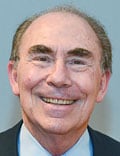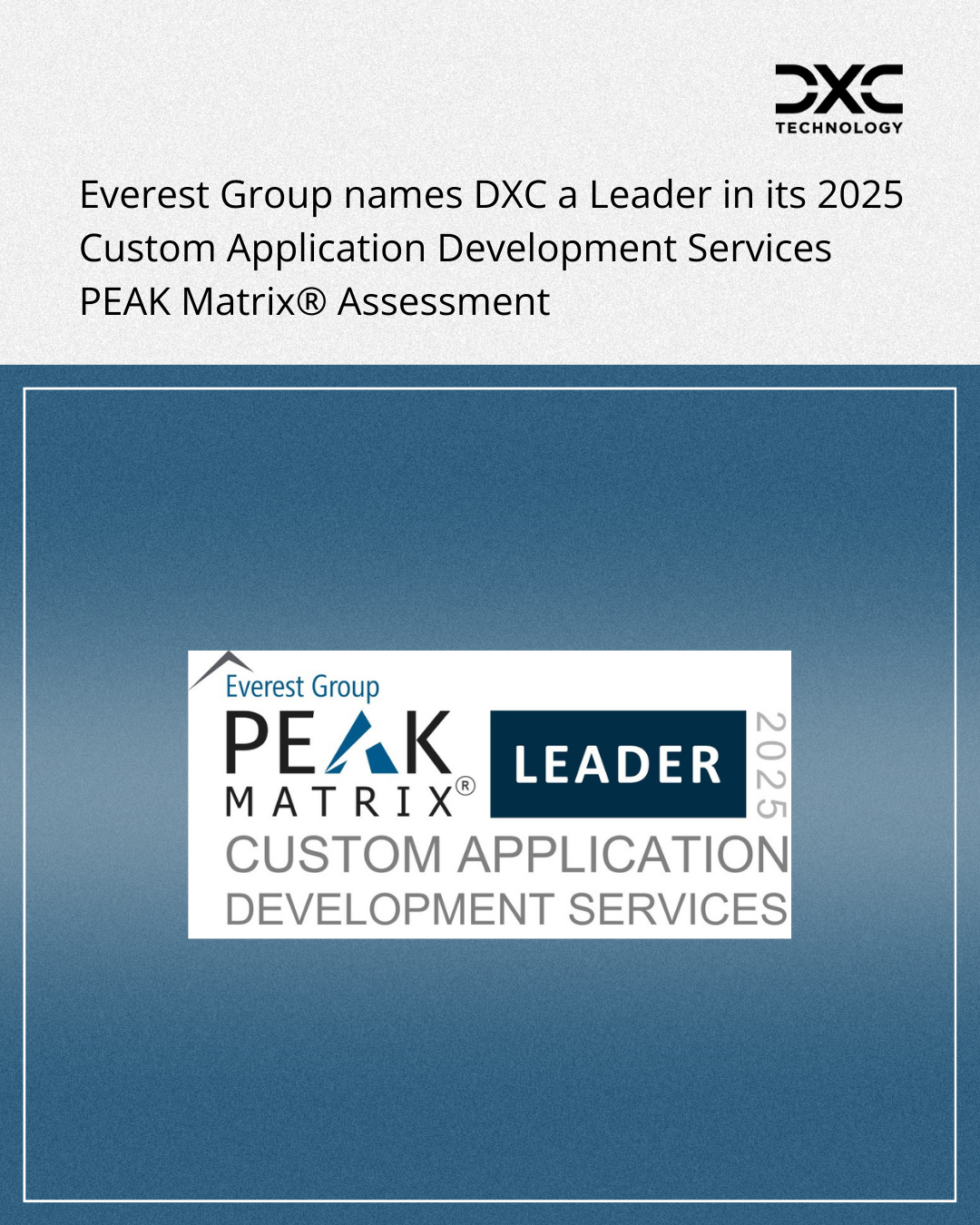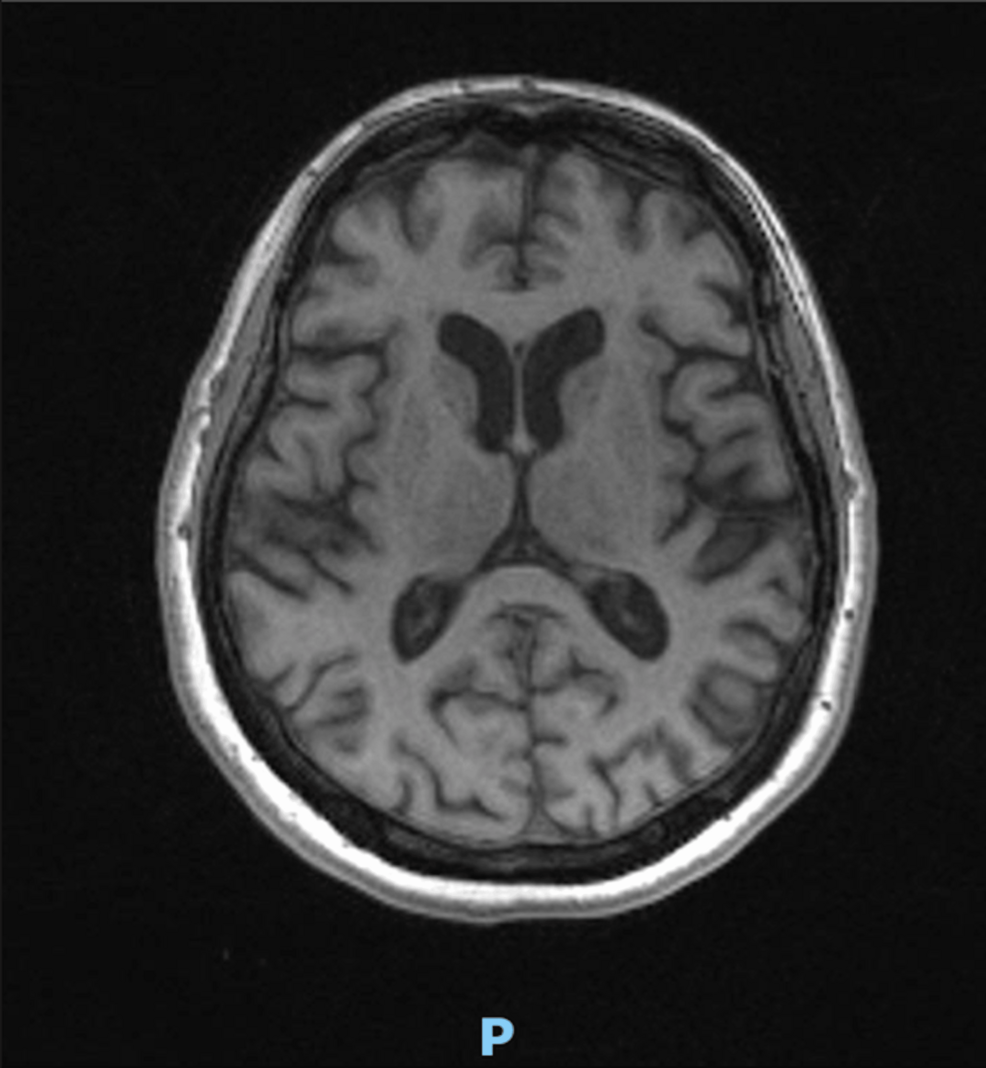Introduction
Sarcoma is a relatively rare form of cancer in adults, accounting for approximately 1% of all human malignancies. However, it is the second most common type of solid tumor in children and adolescents, representing about 15–20% of all pediatric cancers.1 This group is particularly significant as a source of secondary malignancies, with around 30% of sarcoma patients succumbing to the disease. Sarcomas can occur in any part of the body, with 60% of cases found in the arms or legs, and occasionally in the trunk, abdomen, and head.2
According to the World Health Organization (WHO) classification, sarcomas are primarily divided into bone tumors and soft tissue sarcomas, with over a hundred different subtypes based on their specific locations. Among these, osteosarcoma is a common subtype of bone tumors. The latest statistics from the American Cancer Society in 2024 indicate that the incidence rate of malignant bone tumors in children under 14 years old in the United States is 7.8%, while for adolescents, it is 14.6% (Figure 1).3 Although advancements in medical technology have improved the 5-year survival rate for osteosarcoma patients from 20% in the past to 60–70% currently,4 approximately 30% of patients still experience metastasis, with 90% of these cases involving lung metastasis.5 The prognosis for metastatic patients is very poor, with a 10-year overall survival rate of 25% and a median overall survival time of 1–5 years.6–8
|
Figure 1 Statistical map of tumor disease distribution in children under 14 years of age.
|
Osteosarcoma, a highly malignant bone tumor, has an incompletely understood pathogenesis. In recent years, the increasing complexity of environmental factors has led to a growing interest in the potential role of environmental exposures in the development of osteosarcoma. DNA damage can be induced by various external sources such as ionizing radiation, ultraviolet (UV) light, and environmental toxins, as well as internal factors like reactive oxygen species (ROS) and errors during DNA replication.9,10 Given the critical importance of genomic stability for maintaining normal cellular function and overall health, such DNA damage-induced genomic instability is a key factor in initiating carcinogenesis.11 Furthermore, this instability accelerates the progression of cancer cells to more aggressive states through genetic and epigenetic changes, facilitating the transition from benign to malignant tumors.12
Current research has provided some evidence linking certain environmental exposures to the development of osteosarcoma. For example, long-term exposure to specific chemicals and ionizing radiation has been shown to increase the risk of osteosarcoma.13 Additionally, air pollution and certain viral infections are also suspected to be associated with the onset of osteosarcoma.14,15 Environmental risk factors related to osteosarcoma development include ionizing radiation, alkylating agents, heavy metal exposure, fluoridated drinking water, air pollution, viral infections, and occupational exposures (Figure 2). These factors are hypothesized to increase the risk of osteosarcoma.15–21 However, due to the complex nature of osteosarcoma’s etiology and the multitude of environmental factors, current research is insufficient to fully elucidate these associations, and there is a paucity of comprehensive reviews on the subject.
 |
Figure 2 Environmental exposure factors of osteosarcoma.
|
Understanding the environmental etiology of osteosarcoma would enable the prevention of its occurrence. Therefore, this review aims to comprehensively summarize and analyze the current research findings on the association between environmental exposures and the risk of osteosarcoma. To ensure a comprehensive review of environmental factors in relation to osteosarcoma, we conducted an exhaustive literature search in PubMed (https://pubmed.ncbi.nlm.nih.gov/) up to 2025. The search strategy incorporated key terms including “osteosarcoma”, “environment”, “heavy metals”, and related terminology. By systematically reviewing relevant literature, we aim to highlight the critical role of environmental exposures in the development of osteosarcoma, providing new insights and strategies for the prevention and treatment of this disease.
Ionizing Radiation
A small number of osteosarcoma cases have been associated with ionizing radiation.22 Studies have identified exposure to ionizing radiation during radiotherapy as a critical influence.23–26 Ionizing radiation can directly or indirectly damage biomacromolecules within cells. Neutrons and alpha particles, which exhibit high linear energy transfer (LET), can directly damage key cellular components like DNA, RNA, lipids, and proteins.27 In contrast, low LET radiation can indirectly damage these macromolecules through the generation of reactive oxygen species (ROS).28 Low LET ionizing radiation (eg, X-rays and γ-rays) primarily induces cellular damage through radiolysis-generated reactive oxygen species (ROS), including superoxide anions, hydroxyl radicals, hydrogen peroxide, and singlet oxygen. These ROS disrupt redox homeostasis maintained by endogenous antioxidant defense systems (eg, SOD, CAT, GSH, and the Nrf2/ARE pathway), resulting in oxidative stress that subsequently causes lipid peroxidation, protein modification, and DNA damage. The resultant genomic instability activates the DNA damage response (DDR) via the MRN-ATM-Chk2-p53 signaling cascade, leading to cell cycle arrest (at G1/S or G2/M phases) to facilitate DNA repair or initiate apoptosis. Concurrently, oxidative stress triggers inflammatory cascades through HMGB1-RAGE-NF-κB signaling and TWEAK-Fn14 interactions, thereby promoting cytokine release and vascular dysfunction. The effects of ionizing radiation include the induction of single- and double-strand DNA breaks, nucleotide mutations, and a reduction in high-fidelity DNA repair, ultimately leading to decreased cell viability.29 Research has confirmed that radiation-induced damage results in the oxidation of proteins involved in pro-apoptotic downstream signaling pathways.30,31 The molecular mechanisms by which ionizing radiation causes cellular damage depend on the radiation dose, cell type, and the transformation state of the cells. This is supported by the varied manifestations of acute and chronic radiation syndromes, as well as the differential radiosensitivity of specific tissues and organ systems.32,33
Studies have shown that exposure to ionizing radiation in mice leads to pro-inflammatory responses in the thymus,34 with the secretion of ROS and reactive nitrogen species, along with a series of cytokines such as tumor necrosis factor-α (TNF-α) or interleukin-1 (IL-1), which exhibit secondary genotoxicity35 and tumorigenic potential.36,37 NF-κB is a central mediator of tumor microenvironment alterations following localized radiotherapy, capable of inducing complex immunosuppressive responses. When the local radiation dose reaches 8.5 Gy, the NF-κB pathway becomes activated in the spleen, mesenteric lymph nodes, and bone marrow.38 NF-κB activation is also detected in the bone marrow cells of mice subjected to 1 Gy of whole-body proton irradiation. At a higher dose of 20 Gy whole-body proton radiation, robust nuclear translocation of p65 and p50, downstream effectors of NF-κB, occurs in the liver and kidneys, triggering the expression of target genes.39 In rodent models, whole-body irradiation at 5 Gy induces marked activation of the NF-κB signaling pathway in brain tissue.40 A study revealed that exposure of HEK/293 cells to α-particles (0.5 MeV/n, 160 keV/μm) significantly upregulates the NF-κB-regulated gene GADD45B, which has been demonstrated to prevent cell death induced by DNA-damaging agents.41 In radiation-induced biological responses, the p50:p65 heterodimer is most frequently detected as the predominant activated form of the NF-κB signaling pathway.42 Under high-dose radiation exposure, damage-associated molecular patterns (DAMPs) released from injured or dying cells have been shown to specifically recognize and bind to pattern recognition receptors (PRRs), particularly members of the Toll-like receptor (TLR) family,43 leading to NF-κB activation and the production of pro-inflammatory cytokines such as type I interferons (IFN),44 further causing DNA double-strand breaks. Hinz et al demonstrated that 40–60 minutes after exposure to ionizing radiation, ataxia-telangiectasia mutated (ATM) protein is upregulated in HepG2 cells, resulting in the polyubiquitination of TNF receptor-associated factor 6 (TRAF6) in the cytoplasm and the recruitment of cellular inhibitor of apoptosis protein 1 (cIAP1).45 Research indicates that NF-κB essential modulator (NEMO), receptor-interacting protein 1 (RIP1), and ATM are necessary for the activation of the NF-κB pathway in response to severe DNA damage.46 However, the involvement of p53-induced protein domain (PIDD) and RIP1 is considered supportive in this pathway.47,48
Both PIDD and RIP1 may promote the nuclear localization of NEMO and its ubiquitination.49 During the DNA damage response, ubiquitinated NEMO and ATM translocate to the cytoplasm, where they assemble with ELKS to form the IKK signaling complex.50 This complex phosphorylates IκB, leading to its ubiquitination and subsequent proteasomal degradation.51 The liberated p50:p65 heterodimer then translocates into the nucleus, where it activates target gene expression to initiate DNA double-strand break repair.52 The activation of these receptors has significant implications for the interaction between irradiated tumors and the immune system.53 However, most existing studies analyze only a single radiation dose, and there is no established dose-response curve for NF-κB activation. Additionally, the sensitivity of detection methods used in various studies affects the specific dose at which NF-κB activation can be detected.54 In summary, ionizing radiation can directly damage cellular DNA, leading to genetic mutations and chromosomal abnormalities, Figure 3 illustrates the signaling mechanisms involved in this process. Furthermore, studies have demonstrated that ionizing radiation can induce tumor vascular damage, endothelial cell apoptosis, and interstitial fibrosis, leading to vascular lumen narrowing or even occlusion, thereby reducing perfusion and exacerbating local hypoxia.55,56 In human osteosarcoma cells, hypoxia downregulates the Wnt/β-catenin signaling pathway and concurrently induces resistance to doxorubicin. Pharmacological inhibition of Wnt/β-catenin signaling using XAV939 and IWP-2 reduces the half-maximal inhibitory concentration (IC50) of doxorubicin, rendering hypoxic osteosarcoma cells more sensitive to the drug. These findings suggest that the activity threshold of the Wnt/β-catenin pathway influences the survival of hypoxic osteosarcoma cells during chemotherapy. Notably, this implies that ionizing radiation may also modulate doxorubicin resistance in osteosarcoma through Wnt/β-catenin signaling activation, thereby further promoting tumor progression.57 These genetic alterations may affect the normal regulation of cell growth and differentiation, potentially leading to osteosarcoma. The risk of osteosarcoma increases with the radiation dose to the skeleton, with no plateau.58 According to statistics, the latency period for the development of secondary osteosarcoma following radiotherapy ranges from 4 to 40 years, with a median of 14.5 years.59,60 Clinical studies demonstrate that among pediatric cancer survivors, Ewing sarcoma patients exhibit the highest risk of developing secondary osteosarcoma.61 Epidemiological evidence indicates this elevated risk is primarily attributable to the high-dose radiation therapy received during treatment.62,63 Studies have shown that patients under 20 years of age who received radium-224 treatment for tuberculosis and ankylosing spondylitis have an increased risk of developing secondary osteosarcoma. Epidemiological studies have confirmed that occupational radium exposure (including watch dial painters and research chemists) carries a significantly elevated risk of osteosarcoma development. This occupational hazard primarily stems from radium’s radioactive properties and its selective deposition in bone tissue.64,65 Clinical studies have demonstrated a significant association between thorium-232 (Thorotrast), previously used as a radiographic contrast agent, and an increased risk of osteosarcoma development. This thorium-containing contrast medium may induce persistent radiation damage due to its long-term retention in the skeletal system.66–68 Epidemiological investigations have revealed a significant correlation between radiation exposure from the 1986 Chernobyl nuclear accident and increased osteosarcoma incidence among affected populations,69 although no significant correlation has been found between the mortality rate of osteosarcoma and the presence of radioactivity in drinking water.70 According to epidemiological data reported by Hawkins et al, a significant positive correlation exists between cumulative radiation dose to bone and the risk of malignant bone tumor development. Dose-response analyses demonstrate that the incidence of osteosarcoma and other malignant bone tumors shows a marked increasing trend with higher radiation exposure levels.71 In a case-control study involving 4400 three-year survivors of primary cancer, Le Vu et al demonstrated a linear dose-response relationship between localized radiation dose and osteosarcoma risk.33 There is relatively limited research on the relationship between low-dose ionizing radiation and the risk of sarcoma. However, a long-term cohort study (1958–2001) of atomic bomb survivors revealed that even relatively low doses of ionizing radiation exposure were associated with a significant increase in osteosarcoma incidence. This finding challenges the conventional view that only high-dose radiation can induce osteosarcoma.72 However, it should be noted that the study’s conclusions were based on only 19 observed osteosarcoma cases during cohort follow-up. The limited sample size may affect the reliability of the statistical results, and these findings require further validation in larger population studies.
 |
Figure 3 Signal pathways and molecular interactions related to DNA damage in cells. Ionizing radiation primarily affects membrane-proximal molecules including PIDD and RIP1. Following radiation exposure, PIDD interacts with NEMO while RIP1 participates in complex formation. The resulting molecular complex, containing NEMO and other components, subsequently interacts with extranuclear molecules such as SVMO and ATM. Concurrently, the TRAF6-TAK1-TAK2 signaling pathway becomes activated, modulating downstream signaling events. These signaling cascades ultimately converge to activate NF-κB. Phosphorylation of IκB, the inhibitory protein of NF-κB, facilitates nuclear translocation of NF-κB (p50 and p65 subunits), enabling their binding to target genes and subsequent regulation of gene expression to initiate the DNA double-strand break response mechanism.
|
Drinking Water
Fluoride exposure in drinking water has been considered a potential risk factor for osteosarcoma development. Studies show fluoride acts as a mitogen that enhances osteoblast proliferation and increases skeletal fluoride uptake during growth periods.73 This leads to a plausible hypothesis that fluoridated water exposure during growth may correlate with osteosarcoma. However, existing studies remain limited and inconsistent. A case-control study by Moss et al (167 cases vs 989 controls) found no statistically significant association.74 In contrast, a case-control study by Bassin et al (139 cases vs 280 controls) revealed an elevated osteosarcoma risk exclusively in male subjects.71 The observed discrepancy may stem from differing inclusion criteria: the Bassin study exclusively enrolled cases under 20 years old, whereas the Moss study included patients across all age groups.
While substantial evidence confirms the significant association between high-dose radium exposure and malignant bone tumor development, the risk assessment for low-dose exposure remains controversial and understudied.75 An ecological study conducted in Wisconsin found no significant association between radium exposure levels (categorized by regional averages in drinking water) and osteosarcoma risk, despite reported higher radium concentrations in local water supplies compared to surrounding areas.70 A population-based case-control study involving 238 cases and 438 controls evaluated the association between radium exposure in drinking water and bone tumor risk. The findings indicated a modest elevation in osteosarcoma risk among individuals with higher radium concentrations in their birthplace drinking water.75
Occupational Exposure
Occupational exposure factors (including specific job types and industry categories) constitute primary risk factors for osteosarcoma. The Balarajan research team identified significantly elevated osteosarcoma incidence among agricultural workers (encompassing farmers, farm managers, and horticultural workers).76 However, multiple studies have failed to demonstrate a statistically significant association between agricultural occupations and sarcoma risk.77,78 A European case-control study comprising 96 cases and 2632 controls revealed significantly elevated osteosarcoma risk among blacksmiths, toolmakers, and machine-tool operators.79 The study further identified elevated bone tumor incidence among bricklayers and carpenters. Notably, workers involved in wood, cork, and straw processing exhibited significantly increased rates of malignant bone tumors. The data also demonstrated substantially higher bone tumor risk among individuals classified as machinery and equipment manufacturers. Interestingly, in an earlier study, participants classified in industries related to agriculture, crop cultivation, and other associated fields, which may frequently use herbicides and pesticides, did not show a link to the development of bone tumors.79 However, a recent study has revealed a significant association between pesticide exposure and increased risk of both osteogenic sarcoma and Ewing’s sarcoma.80 These contradictory findings may stem from multiple factors, including differences in sample sizes, pesticide application methods, and detection techniques across studies.
The Nordic Occupational Cancer Study (NOCCA) has compiled 45 years of cancer epidemiology data from Denmark, Finland, Iceland, Norway and Sweden.81 The project employs standardized incidence ratios (SIR) as a key metric to quantify cancer risk across occupational groups. SIR assesses occupational cancer risk by comparing observed case numbers with expected figures based on population age structure. The NOCCA study revealed significantly elevated standardized incidence ratios (SIR=2.25, 95% CI: 1.29–3.66) for malignant bone tumors among males classified as “other health workers.” These findings suggest that medical professionals such as radiologists and technicians may face increased osteosarcoma risk due to occupational radiation exposure. The study also identified significant incidence elevations among military personnel (SIR=2.88, 95% CI: 1.68–4.61), maritime workers (SIR=1.92, 95% CI: 1.05–3.22), and professional drivers (SIR=1.45, 95% CI: 1.09–1.88). A large-scale case-control study conducted in northern England (565 sarcoma cases vs 29,520 controls) demonstrated a significant association between parental occupational exposure to electromagnetic fields and non-ionizing radiation with increased osteosarcoma risk in offspring. Further investigations are required to verify whether these occupational exposures involve ionizing radiation and other confirmed physical causative factors for malignant bone tumors.
Exposure to Heavy Metals
A substantial body of epidemiological and experimental research has demonstrated that exposure to heavy metals can lead to a variety of health issues, including dermatological conditions, skeletal damage, and immune system dysregulation.82–84 Such exposure is also associated with an increased risk of multiple types of cancer.85 For example, cadmium, classified as a human carcinogen by the International Agency for Research on Cancer (IARC), has been linked to an elevated risk of lung, prostate, and kidney cancers.86 Human exposure to heavy metals occurs through various environmental media, primarily air, water, and food chain contamination. Additionally, the use of medical devices containing heavy metals in specific medical interventions is another significant route for direct entry of these metals into the human body.
Fine particulate matter (PM2.5) is a major component of air pollutants and a primary cause of smog pollution in recent years. PM2.5 contains high levels of heavy metals, with zinc ions being a predominant water-soluble metal component in atmospheric particles. Zinc is recognized as a bone remodeling factor, playing a role in bone-related biological processes such as growth, homeostasis, and regeneration. Preclinical and clinical evidence suggests that disruptions in intracellular and tissue-level zinc homeostasis play a significant role in the pathogenesis of osteosarcoma and indirectly modulate inflammatory and pro/anti-tumorigenic responses in immune cells.87 Studies have shown that intracellular zinc levels are significantly higher in tumor cells compared to normal cells.88 The standard treatment strategy for osteosarcoma typically involves a multimodal approach, including neoadjuvant chemotherapy, extensive surgical resection, and adjuvant chemotherapy. Large bone defects resulting from surgery often require reconstructive orthopedic procedures. The use of metal alloys as implant materials in these surgeries has become a common practice. During physical activity, wear debris from these implants can accumulate around the implant site and potentially enter the circulatory system. Heavy metals released from surgical implants, such as beryllium, cadmium, chromium, cobalt, iron, lead, nickel, selenium, zinc, and titanium compounds, have been shown to be carcinogenic in experimental studies.89–91 With the advent of porous, ingrowth materials, the relative surface area of implants has increased three to tenfold, leading to greater interaction between the alloy surfaces and the body.
One case study reported a 65-year-old woman who developed osteosarcoma at the site of a Smith-Petersen three-bladed nail used to treat a femoral neck fracture nine years earlier. Biopsy revealed scattered metal fragments within the tumor, with a nickel concentration of 14 ppm in the tumor tissue, compared to less than 1.4 ppm in surrounding samples. The tumor tissue also contained up to 94 ppm of iron, while the tissue levels of cobalt, chromium, and molybdenum were similar in both the tumor and distant control tissues.92 Macrophages and multinucleated cells containing abundant rod-shaped bodies up to 3 mm in length were observed in the bone and connective tissue around the cobalt-chromium implant, indicating a lymphocytic response to metal shedding from the prosthesis. In a study by Martin et al, a patient who underwent total hip replacement with a cobalt-chromium alloy developed angiosarcoma at the implant site 10 years later, with elevated levels of cobalt, chromium, and nickel detected in the tumor.93 Penman et al noted the presence of gray-brown granular pigments in osteosarcoma tissue, and McDougal observed blackened corrosion products at the site of plates and screws used for internal fixation.94,95
Titanium (Ti) and its alloys represent highly promising biomaterials for orthopedic applications, demonstrating distinct advantages in post-resection bone repair.96 Titanium endoprosthetic reconstruction has been established as the standard clinical treatment for bone defects following osteosarcoma resection, offering immediate biomechanical stability and enabling early functional rehabilitation including ambulation and weight-bearing exercises.97 Given that bacterial biofilm formation and tumor growth share similar microenvironmental characteristics, there exists significant pathological synergy between titanium implant-associated infections and osteosarcoma recurrence.98,99 In other words, the acidic microenvironment created by bacterial biofilms can promote tumor recurrence.
Viral Infection
The development of osteosarcoma has been linked, to some degree, with certain viral infections. While not all osteosarcomas are attributed to viral causes, specific viruses, including Human Papillomavirus (HPV), Simian Virus 40 (SV40), and murine sarcoma virus, have been investigated and proposed as potential contributors to certain types of osteosarcoma. Current research evidence suggests a potential association between viral infections and the pathogenesis of osteosarcoma, a phenomenon that has been preliminarily validated in animal experimental models.100–102 Experimental data indicate that hamster models demonstrate relatively low spontaneous osteosarcoma incidence, yet tumor development can be successfully induced by inoculation with human-derived osteosarcoma cell extracts. More revealingly, sera from osteosarcoma patients elicit specific humoral immune responses in this animal model, a finding that provides direct experimental evidence supporting the human osteosarcoma virus pathogenesis theory.103–106 In humans, 100% of osteosarcoma patients and 85% of their healthy family members exhibit anti-osteosarcoma antibodies, while only 29% of healthy blood donors in the control group show these antibodies.107 A study involving 93 cases and 721 controls examined the potential risk of other viral infections on the development of soft tissue sarcomas, finding that individuals with a history of herpes zoster, varicella, and mumps had a higher risk of developing these tumors.108 Between 1955 and 1963, millions of Americans received formalin-inactivated Salk poliovirus vaccines, some of which were contaminated with small amounts of infectious SV40, a polyomavirus from rhesus monkeys. Reports have indicated that osteosarcoma and other cancers contain SV40 DNA sequences, leading to speculation about whether the introduction of SV40 through the vaccine might have facilitated the development of these cancers.109 Despite these findings, there is currently no conclusive evidence to affirm that osteosarcoma is definitively caused by a virus or that it is generally transmissible.
Alkylating Agents
Multiple studies have confirmed that exposure to specific chemotherapeutic agents (including nitrogen mustard, cyclophosphamide, ifosfamide, and/or anthracyclines) may independently contribute to osteosarcoma development, irrespective of other interventions such as radiation therapy.62 Clinical observations demonstrate a significantly elevated incidence of osteosarcoma among Ewing sarcoma survivors, primarily attributable to the standard treatment protocol involving high-dose alkylating agent chemotherapy combined with radiotherapy.33 The risk of secondary osteosarcoma is lower after combination chemotherapy with multiple drugs for primary osteosarcoma than after the recurrence of osteosarcoma following primary Ewing’s sarcoma. Epidemiological studies have confirmed a significant dose-dependent relationship between cumulative chemotherapeutic drug exposure and secondary osteosarcoma risk. Notably, anthracycline administration has been shown to substantially shorten the latency period of secondary osteosarcoma development.110
Air Pollution
Current research provides some clues regarding the association between air pollution and the incidence of osteosarcoma, though further in-depth investigation is warranted. Studies suggest that certain components of air pollution may be linked to an increased risk of osteosarcoma. In a nested case-control study utilizing a nationwide population database to explore the association between ambient air pollution exposure and the likelihood of developing connective tissue sarcomas, it was found that the risk of connective tissue sarcomas, as indicated by the Charlson Comorbidity Index (CCI), was associated with elevated levels of specific air pollution indices, including total hydrocarbons (THC), fine particulate matter (PM2.5), and O3_8 (annual average of daily maximum 8-hour O3 concentrations).111 Another study examined the effects of bioactive acrolein from vehicle exhaust on human osteosarcoma cells, demonstrating that reducing acrolein reactivity in exhaust decreased airborne toxicity, thereby benefiting human health.112 Air pollutants such as diesel exhaust particles may trigger inflammatory responses by activating specific signaling pathways (eg, RAGE signaling), which could indirectly promote tumorigenesis.113 Although direct evidence remains limited, high PM2.5 exposure has been associated with other bone-related disorders, such as osteoporosis.114 Studies have reported that chronic exposure to biomass smoke-derived PM2.5/PM10 may upregulate both membrane-bound and soluble RANKL (receptor activator of nuclear factor κB ligand) while downregulating its antagonist OPG (osteoprotegerin), thereby promoting osteoclast differentiation. This mechanism could potentially exacerbate bone destruction in osteosarcoma.115 Additionally, persistent organic pollutants like dioxins emitted from industrial incineration have been implicated in an increased risk of soft tissue sarcomas.116 Study has shown that 2,3,7,8-tetrachlorodibenzo-p-dioxin (TCDD) functions as a ligand for the aryl hydrocarbon receptor (AhR). Upon binding, TCDD induces conformational changes in AhR, leading to activation of the AhR signaling pathway. This activation results in AhR protein degradation through the ubiquitin-proteasome pathway while simultaneously upregulating AhR-regulated genes such as Cyp1a1. In osteosarcoma cells, the activated AhR pathway increases expression of receptor activator of nuclear factor kappa-B ligand (RANKL), cyclooxygenase-2 (COX-2), prostaglandin E2 (PGE2), and chemokine receptor CXCR4. These molecular changes may enhance bone resorption and promote tumor migration and proliferation.117 The impact of air pollution on osteosarcoma development is a complex, multifactorial issue. While current direct evidence linking air pollution to osteosarcoma is limited, the aforementioned studies suggest that air pollutants may contribute to an elevated risk of osteosarcoma through diverse mechanisms.
Other
Genetic predisposition plays a significant regulatory role in the pathogenesis of secondary osteosarcoma. Genome-wide association studies (GWAS) have identified multiple risk-associated single nucleotide polymorphisms (SNPs), particularly in genes involved in DNA repair pathways.118 Furthermore, multiple studies have confirmed that early onset of pubertal growth spurts or tall stature may constitute significant risk factors for osteosarcoma development. Genome-wide association studies (GWAS) data indicate that polymorphisms in genes related to the growth hormone/insulin-like growth factor (GH/IGF) axis show significant associations with osteosarcoma risk.119 Among the six papers cited, three were case-control studies,120–122 two were case series,123,124 and one was a pooled analysis.125 Only one paper did not report a link between osteosarcoma and increased growth during early puberty.122 This case-control study demonstrates a notable sample size disparity (64 cases/124 controls) compared to previous retrospective studies. Available evidence indicates: two independent case series each enrolled >700 subjects, while three comparable case-control studies achieved sample sizes exceeding twice the baseline osteosarcoma cases in retrospective analyses. Current evidence suggests that accelerated skeletal growth during adolescence may be associated with increased osteosarcoma risk. The Buckley research team further demonstrated that pubertal timing significantly influences osteosarcoma risk in females. Further investigations are required to elucidate the underlying physiological mechanisms.126
Female patients with osteosarcoma are often influenced by breast development and menarche, with the adolescent development period occurring significantly earlier in osteosarcoma patients compared to controls. Two studies also reported that females are generally diagnosed with osteosarcoma at a younger age than males. Research has shown that childhood exposure to phthalates is associated with the incidence of osteosarcoma before age 19, using a sample of all live births in Denmark from 1997 to 2017, with phthalate exposure data measured through medication prescription components for mothers during pregnancy (pregnancy exposure) and for children from birth to age 19 (childhood exposure); however, the mechanisms through which phthalates lead to these associations have not been fully investigated.127 Additionally, some studies have indicated that there appears to be no significant difference in age-standardized incidence rates of osteosarcoma between males and females in Asian countries and the United States.128 Overall, the incidence of sarcoma is similar in most parts of the world. Typically, the incidence of osteosarcoma ranges from 0.2 to 0.6 cases per 100,000 males. However, it has been reported that Japanese males residing in California have an incidence rate of 1.3 cases per 100,000 males,129 which is relatively high compared to rates observed in most parts of the world. Similarly, Japanese males residing in Hawaii have been reported to have an incidence rate as high as 1.1 cases per 100,000 individuals.130 These findings may suggest that Japanese immigrants living in “westernized” areas may have an increased risk of osteosarcoma due to environmental or lifestyle factors. A high incidence of osteosarcoma has been reported in Sondrio, Italy, with 1.4 cases per 100,000 females.131 The rest of the geographical regions in Italy report significantly lower incidence rates of osteosarcoma in females, ranging from 0.1 to 0.4 cases per 100,000 individuals. These geographical differences in sarcoma incidence clearly warrant further investigation, which is beyond the scope of this review. These findings suggest that both genetic and environmental factors may be involved in the etiology of sarcoma. To better understand the underlying mechanisms causing the aforementioned racial differences, further research on the biological and genetic differences in osteosarcoma among different races is needed.
Discussion
Osteosarcoma, the most common malignant tumor among primary bone tumors, predominantly affects adolescents with rapid skeletal growth and development.132 This review analyzes various potential risk factors for the development of osteosarcoma. Ionizing radiation stands out as a well-established causal factor, with high-dose radiation significantly increasing the risk of malignant bone tumors, and the risk rising with increasing radiation dose. Additionally, fluoride in drinking water, alkylating agents, occupational exposures, viral infections, and heavy metal exposure have been investigated as potential risk factors for osteosarcoma development. Skeletal development during the pubertal growth spurt and a history of hernia have also been found to be associated with the occurrence of osteosarcoma. However, due to the complex pathogenesis of osteosarcoma and the multitude of environmental exposure factors, most articles assessing environmental exposures lack sufficient evidence to draw robust conclusions, rendering current research inadequate to fully elucidate their association with the risk of developing osteosarcoma. In most cases, more frequently studied environmental exposure factors have been found to show significant correlations with the occurrence of osteosarcoma, albeit with occasional inconsistent results. In such instances, when exposure factors have been extensively studied and the results of these studies demonstrate overwhelming consistency, we classify these exposures as closely related to osteosarcoma.
Radiation exposure through radiotherapy has been well-documented to be closely associated with the development of secondary osteosarcoma. As previously mentioned, this evidence has been consistently replicated in several different studies and proven to be quite consistent.24–26,33,71 The risk of radiation exposure and osteosarcoma also explains the increased risk of secondary cancers in individuals diagnosed with childhood cancers. These findings highlight the importance of taking preventive measures against radiation exposure during cancer treatment and implementing effective early cancer monitoring strategies to detect radiation-induced secondary malignancies early. Further research into alternative effective treatment options is necessary to further reduce the risk of osteosarcoma as a secondary tumor.
Occupational exposure factors (encompassing specific job types, industry categories, and contact with herbicides/chlorophenols) have been established as significant environmental risk factors for osteosarcoma. Nevertheless, there is currently no definitive consensus regarding the exact association between these risk factors and sarcoma development, with significant heterogeneity observed across existing studies. With the implementation of large-scale cohort studies and methodological refinements, the strength of evidence for these causal relationships is expected to be more clearly established. In addition, studies have shown that skeletal development during the adolescent growth spurt and a history of hernia are associated with the occurrence of osteosarcoma. In fact, most studies agree that there is a significant statistical correlation between these two factors and the incidence of osteosarcoma. Once further studies can replicate these findings, these two factors may soon be identified as strongly related risk factors for the development of osteosarcoma. However, it is difficult to draw reliable conclusions based solely on existing studies, as many research results have not been sufficiently replicated. For example, only two studies have evaluated the potential impact of industrial incinerators emitting dioxins on the development of sarcomas.105,106 Yet, drawing conclusions based solely on an ecological study of 110 cases and a case-control study of 37 cases is relatively weak.
Maternal and paternal characteristics, such as occupation, age, smoking status, and health status during pregnancy, are also important factors for future research evaluation. Although the evidence on these risk factors is currently extremely limited, associations with sarcoma risk have been shown, but these results now need to be further validated in larger populations. Similarly, it is difficult to draw any conclusions based on very few studies and key findings that have rarely been replicated. The existing literature and studies show that risk research on osteosarcoma faces many challenges, and the study of these rare diseases is quite difficult. The difficulty in investigating rare outcomes lies in the assessment of rare exposure factors, which often leads to unclear or contradictory research results. For example, the relationship between occupational factors and the risk of sarcoma development is one of the more frequently studied and common themes.76,78,133 However, even with a large number of papers published on this specific topic, it remains difficult to draw clear conclusions. Many occupational exposure studies lack the statistical power and sufficient sample size to reach robust conclusions. Thus, we again conclude that the identified associations are suggestive. Additionally, many studies need to group osteosarcoma subtypes together to obtain sufficient statistical power for comprehensive research, which may lead to the assumption that many osteosarcoma subtypes share the same etiological characteristics. Future research will benefit from long-term record-keeping registration systems, which can provide sufficient samples of rare cancers. Sufficient sample sizes enable separate subgroup analyses of multiple osteosarcoma subtypes. If the sample size permits, stratified analyses of other potentially relevant factors, such as gender, can also be conducted. It is also necessary to further consider improving methods for collecting exposure information. If record-keeping systems cannot provide highly accurate exposure information, efforts should be made to collect more comprehensive data to adjust for potential confounding factors, such as considering the impact of socioeconomic status in occupational studies. Additionally, we note that in many of the relationships evaluated in the literature, there is limited understanding of the underlying biological mechanisms behind each epidemiological association. Future research with larger sample sizes, more accurate exposure information, and more comprehensive adjustment for confounding factors will enhance our understanding of the environmental exposure factors contributing to tumorigenesis in this fatal cancer type through studies of potential genetic risks for osteosarcoma.
Conclusion
This review examines the relationship between environmental exposures and osteosarcoma risk. As the most prevalent primary malignant bone tumor in adolescents, osteosarcoma has a complex and incompletely understood pathogenesis. Multiple environmental factors may contribute to its development through various mechanisms: ionizing radiation directly induces DNA damage and genomic instability; fluoride in drinking water and heavy metals (eg, cadmium, zinc, nickel) may disrupt bone metabolism and trigger inflammation; while occupational exposures and certain viral infections have also shown potential associations. Notably, the interaction between rapid skeletal growth during puberty, genetic predisposition, and environmental factors may further elevate risk. Although some inconsistencies exist in current evidence, large-scale studies and molecular research continue to support environmental influences. Given these established environmental risk factors, a comprehensive approach to prevention and management becomes imperative.
Building upon these pathogenic mechanisms, effective management of environmentally linked osteosarcoma requires a multidimensional approach. At the preventive level, emphasis should be placed on reducing exposure to environmental carcinogens such as polycyclic aromatic hydrocarbons (PAHs) through rigorous industrial emission controls, advanced vehicular exhaust purification technologies, and personal protective measures, complemented by lifestyle modifications including increased consumption of antioxidant-rich foods and regular physical activity. For high-risk populations (eg, individuals with chronic pollutant exposure or genetic predisposition), early screening incorporating imaging modalities (X-ray, MRI, CT) combined with molecular biomarker analysis (eg, PAH-DNA adducts, genetic variations in ACTB/EGFR/JUN) is recommended. Therapeutically, while maintaining conventional surgical resection and chemotherapy as foundational approaches, emerging strategies such as targeted therapies (eg, EGFR inhibitors) and immunotherapies should be integrated to develop personalized treatment regimens. Future research must prioritize elucidating gene-environment interactions to establish more precise prevention and treatment frameworks. This comprehensive three-tiered prevention system – primary prevention (environmental exposure control), secondary prevention (early detection), and tertiary prevention (optimized treatment) – provides a systematic solution for managing environmentally-associated osteosarcoma. While current strategies show promise, significant knowledge gaps remain that warrant further investigation. Future investigations should focus on improved exposure assessment and gene-environment interactions to better understand osteosarcoma etiology and inform prevention strategies.
Data Sharing Statement
All data can be available from the corresponding author.
Funding
This study was funded by the Science and Technology Program of Liaoning Province (2022-MS-411); Liaoning Province Science and Technology Joint Plan (2023JH2/101700154).
Disclosure
The authors report no conflicts of interest in this work.
References
1. Stiller CA, Trama A, Serraino D, et al. Descriptive epidemiology ofsarcomas in Europe: report fiomthe RARECARE project. Eur J Cancer. 2013;49(3):684–695. doi:10.1016/j.ejca.2012.09.011
2. Ferguson JL, Tuner SP. Bone cancer: diagnosis and treatment principles. Am Fam Physician. 2018;98(4):205–213.
3. Siegel RL, Giaquinto AN, Jemal A. Cancer statistics. CA Cancer J Clin. 2024;74(1):12–49. doi:10.3322/caac.21820
4. Dhammi IK, Kumar S. Osteosarcoma: a journey from amputation to limbsalvage. Indian J Orthop. 2014;48(3):233–234. doi:10.4103/0019-5413.132486
5. Niu XH, Cai Y-B, Zhang Q, et al. Long-term results ofcombined therapyfor primary osteosarcomain extremities of189 cases. Zhonghua Wai Ke Za Zhi. 2005;43(24):1576–1579.
6. Salah S, Toubasi S. Factors predicting survival following complete surgical remission of pulmonary metastasis in osteosarcoma. Mol Clin Oncol. 2014;3(1):157–162. doi:10.3892/mco.2014.426
7. Pastorino U, Palmerini E, Porcu L, et al. Lung metastasectomy for osteosarcoma in children, adolescents, and young adults: proof of permanent cure. Tumori J. 2021;109(1):79–85. doi:10.1177/03008916211053048
8. Anderson ME. Update on Survival in Osteosarcoma. Orthop Clin North Am. 2016;47(1):283–292. doi:10.1016/j.ocl.2015.08.022
9. Forma E, Brys M, Wanda M. TopBP1 in DNA Damage Response. InTech eBooks; 2011.
10. Van Houten B. Pulmonary arterial hypertension is associated with oxidative stress–induced genome instability. Am J Respir Crit Care Med. 2015;192(2):129–130. doi:10.1164/rccm.201505-0904ED
11. Shen Z. Genomic instability and cancer: an introduction. J Mol Cell Biol. 2011;3(1):1–3. doi:10.1093/jmcb/mjq057
12. Guo S, Zhu X, Huang Z, et al. Genomic instability drives tumorigenesis and metastasis and its implications for cancer therapy. Biomed Pharmacother. 2022;157:114036. doi:10.1016/j.biopha.2022.114036
13. Rosemann M, Kuosaite V, Nathrath M, Atkinson MJ. The genetics of radiation-induced and sporadic osteosarcoma: a unifying theory? J Radiol Prot. 2002;22(3A):A113–A116. doi:10.1088/0952-4746/22/3A/320
14. Devi NA, Kurniati YP. The influence of age factor and industrial area on the malignancy rate of bone tumours. Journal La Medihealtico. 2024;5(5):1032–1042. doi:10.37899/journallamedihealtico.v5i5.1616
15. Chen Q, Chen J, Li Y, et al. Kaposi’s sarcoma herpesvirus is associated with osteosarcoma in Xinjiang Uyghur Population. bioRxiv. 2020.
16. Ogura I, Sasaki Y, Ono J, et al. CT and MRI of radiation-induced osteosarcoma of the mandibular ramus following radiotherapy for nasopharyngeal carcinoma: a rare entity. J Oral Maxillofac Radiol. 2017;5(1):19. doi:10.4103/jomr.jomr_40_16
17. Shimatani A, Aono M, Hoshi M, et al. Secondary osteosarcoma in patients previously treated for childhood cancer: three case reports. Mol Clin Oncol. 2018. doi:10.3892/mco.2018.1752
18. Järup L. Hazards of heavy metal contamination. Br Med Bul. 2003;68(1):167–182. doi:10.1093/bmb/ldg032
19. Kharb S, Sandhu R, Kundu ZS. Fluoride levels and osteosarcoma. South Asian J Cancer. 2012;01(02):76–77. doi:10.4103/2278-330X.103717
20. Ge Q, Yang S, Qian Y, et al. Ambient PM2.5 exposure and bone homeostasis: analysis of UK biobank data and experimental studies in mice and in vitro. Environ Health Perspect. 2023;131(10). doi:10.1289/EHP11646
21. Merletti F, Richiardi L, Bertoni F, et al. Occupational factors and risk of adult bone sarcomas: a multicentric case‐control study in Europe. Int J Cancer. 2005;118(3):721–727. doi:10.1002/ijc.21388
22. Virtanen A, Pukkala E, Auvinen A. Incidence of bone and soft tissue sarcoma after radiotherapy: a cohort study of 295, 712 Finnish cancer patients. Int J Cancer. 2005;118(4):1017–1021. doi:10.1002/ijc.21456
23. Rubino C, Shamsaldin A, Lê MG, et al. Radiation dose and risk of soft tissue and bone sarcoma after breast cancer treatment. Breast Cancer Res Treat. 2005;89(3):277–288. doi:10.1007/s10549-004-2472-8
24. Tucker MA, D’Angio GJ, Boice JD, et al. Bone sarcomas linked to radiotherapy and chemotherapy in children. N Engl J Med. 1987;317(10):588–593. doi:10.1056/NEJM198709033171002
25. Hwang SJ, Lozano G, Amos CI, Strong LC. Germline p53 mutations in a cohort with childhood sarcoma: sex differences in cancer risk. Am J Hum Genet. 2003;72(4):975–983. doi:10.1086/374567
26. Menu-Branthomme A, Rubino C, Shamsaldin A, et al. Radiation dose, chemotherapy and risk of soft tissue sarcoma after solid tumours during childhood. Int J Cancer. 2004;110(1):87–93. doi:10.1002/ijc.20002
27. Maliszewska-Olejniczak K, Kaniowski D, Araszkiewicz M, et al. Molecular mechanisms of specific cellular DNA damage response and repair induced by the mixed radiation field during boron neutron capture therapy. Front Oncol. 2021;11. doi:10.3389/fonc.2021.676575
28. Anuranjani, Bala M. Concerted action of Nrf2-ARE pathway, MRN complex, HMGB1 and inflammatory cytokines – Implication in modification of radiation damage. Redox Biol. 2014;2:832–846. doi:10.1016/j.redox.2014.02.008
29. Shuryak I, Brenner DJ. Mechanistic analysis of the contributions of DNA andprotein damageto radiation-induced cell death. Radiat Res. 2012;178:17–24. doi:10.1667/RR2877.1
30. Du J, Gebicki JM. Proteins are major initial cell targets of hydroxyl freeradicalsl. Int J Biochem Cell Biol. 2004;36:2334–2343. doi:10.1016/j.biocel.2004.05.012
31. Panganiban RA, Mungunsukh O, Day RM. X-irradiation induces er stress, apoptosis, and senescence in pulmonary artery endothelial cells. Int J Radiat Biol. 2013;89(8):656–667. doi:10.3109/09553002.2012.711502
32. Tamulevicius P, Wang M, Lliakis G. Homology-directed repair is required forthedevelopment of radioresistance during S phase: interplay betweendouble-strand break repair andcheckpoint response. Radiat Res. 2007;167:1–11. doi:10.1667/RR0751.1
33. Le Vu B, de Vathaire F, Shamsaldin A, et al. Radiation dose, chemotherapy and risk of osteosarcoma after solid tumours during childhood. Int J Cancer. 1998;77:370–377. doi:10.1002/(SICI)1097-0215(19980729)77:3<370::AID-IJC11>3.0.CO;2-C
34. Yoshida K, Liu Z, Kubo Y, et al. Spermidine alleviates thymopoiesis defects and aging of the peripheral T-cell population in mice after radiation exposure. Exp Gerontology. 2024;199:112646. doi:10.1016/j.exger.2024.112646
35. Formenti SC, Demaria S. Systemic effects of local radiotherapy. Lancet Oncol. 2009;10(7):718–726. doi:10.1016/S1470-2045(09)70082-8
36. Coates PJ, Rundle JK, Lorimore SA, Wright EG. Indirect macrophage responses to ionizing radiation: implications for genotype-dependent bystander signaling. Cancer Res. 2008;68(2):450–456. doi:10.1158/0008-5472.CAN-07-3050
37. Wright EG, Coates PJ. Untargeted effects of ionizing radiation: implications for radiation pathology. Mutat Res. 2006;597(1–2):119–132. doi:10.1016/j.mrfmmm.2005.03.035
38. Rithidech KN, Reungpatthanaphong P, Honikel L, Rusek A, Simon SR. Dose-rate effects of protons on in vivo activation of nuclear factor-kappa B and cytokines in mouse bone marrow cells. Radiat Environ Biophys. 2010;49(3):405–419. doi:10.1007/s00411-010-0295-z
39. Li N, Banin S, Ouyang H, et al. ATM is required for IkappaB kinase (IKKk) activation in response to DNA double strand breaks. J Biol Chem. 2001;276(12):8898–8903. doi:10.1074/jbc.M009809200
40. Raju U, Gumin GJ, Tofilon PJ. Radiation-induced transcription factor activation in the rat cerebral cortex. Int J Radiat Biol. 2000;76(8):1045–1053. doi:10.1080/09553000050111514
41. Karin M, Lin A. NF-kappaB at the crossroads of life and death. Nat Immunol. 2002;3(3):221–227. doi:10.1038/ni0302-221
42. Habraken Y, Piette J. NF-kappaB activation by double-strand breaks. Biochem Pharmacol. 2006;72(9):1132–1141. doi:10.1016/j.bcp.2006.07.015
43. Pradere JP, Dapito DH, Schwabe RF. The Yin and Yang of Toll-like receptors in cancer. Oncogene. 2014;33(27):3485–3495. doi:10.1038/onc.2013.302
44. Jeong E, Lee JY. Intrinsic and extrinsic regulation of innate immune receptors. Yonsei Med J. 2011;52(3):379. doi:10.3349/ymj.2011.52.3.379
45. Hinz M, Stilmann M, Arslan SÇ, Khanna KK, Dittmar G, Scheidereit C. A cytoplasmic ATM-TRAF6-cIAP1 module links nuclear DNA damage signaling to ubiquitin-mediated NF-κB activation. Mol Cell. 2010;40(1):63–74. doi:10.1016/j.molcel.2010.09.008
46. Biton S, Ashkenazi A. NEMO and RIP1 control cell fate in response to extensive DNA damage via TNF-α feedforward signaling. Cell. 2011;145(1):92–103. doi:10.1016/j.cell.2011.02.023
47. Janssens S, Tinel A, Lippens S, Tschopp J. PIDD mediates NF-kappaB activation in response to DNA damage. Cell. 2005;123(6):1079–1092. doi:10.1016/j.cell.2005.09.036
48. McCool KW, Miyamoto S. DNA damage-dependent NF-κB activation: NEMO turns nuclear signaling inside out. Immunol Rev. 2012;246(1):311–326. doi:10.1111/j.1600-065X.2012.01101.x
49. Bock FJ, Krumschnabel G, Manzl C, et al. Loss of PIDD limits NF-κB activation and cytokine production but not cell survival or transformation after DNA damage. Cell Death Differ. 2013;20(4):546–557. doi:10.1038/cdd.2012.152
50. Hadian K, Krappmann D. Signals from the nucleus: activation of NF-κB by cytosolic ATM in the DNA damage response. Sci Signaling. 2011;4(156). doi:10.1126/scisignal.2001712
51. Orel L, Neumeier H, Hochrainer K, et al. Crosstalk between the NF‐κB activating IKK‐complex and the CSN signalosome. J Cell Mol Med. 2009;14(6b):1555–1568. doi:10.1111/j.1582-4934.2009.00866.x
52. O’Leary C, Deraska P, Sweeney C, et al. Abstract 3336: NF-κB inhibition by DMAPT radiosensitizes non-small cell lung carcinoma by impairing DNA double strand break repair. Cancer Res. 2015;75(15_Supplement):3336. doi:10.1158/1538-7445.AM2015-3336
53. Hellweg CE, Spitta LF, Henschenmacher B, et al. Transcription factors in the cellular response to charged particle exposure. Front Oncol. 2016;6. doi:10.3389/fonc.2016.00061
54. Noursadeghi M, Tsang J, Haustein T, et al. Quantitative imaging assay for NF-κB nuclear translocation in primary human macrophages. J Immunol Methods. 2007;329(1–2):194–200. doi:10.1016/j.jim.2007.10.015
55. Gupta K, Burns TC. Radiation-induced alterations in the recurrent glioblastoma microenvironment: therapeutic implications. Front Oncol. 2018;8. doi:10.3389/fonc.2018.00503
56. Yeom CJ, Zeng L, Zhu Y, et al. Strategies to assess Hypoxic/HIF-1-active cancer cells for the development of innovative radiation therapy. Cancers. 2011;3(3):3610–3631. doi:10.3390/cancers3033610
57. Scholten DJ, Timmer CM, Peacock JD, Pelle DW, Williams BO, Steensma MR. Down regulation of Wnt signaling mitigates hypoxia-induced chemoresistance in human osteosarcoma cells. PLoS One. 2014;9(10):e111431. doi:10.1371/journal.pone.0111431
58. Schwartz B, Benadjaoud MA, Cléro E, et al. Risk of second bone sarcoma following childhood cancer: role of radiation therapy treatment. Radiat Environ Biophys. 2014;53(2):381–390. doi:10.1007/s00411-013-0510-9
59. Huvos AG, Woodard HQ, Heilweil M. Postradiation malignant fibrous histiocytoma of bone. Am J Surg Pathol. 1986;10(1):9–18. doi:10.1097/00000478-198601000-00002
60. Dray MS, Miller MV. Paget’s osteosarcoma and post-radiation osteosarcoma: secondary osteosarcoma at Middlemore Hospital, New Zealand. Pathology. 2008;40(6):604–610. doi:10.1080/00313020802320663
61. Kebudi R, Ayan I, Gorgun O, et al. Second malignant tumors in childhood cancer survivors. J Clin Oncol. 2011;29(15_suppl):9573. doi:10.1200/jco.2011.29.15_suppl.9573
62. Inskip PD, Ries LAG, Cohen RJ, et al. New malignancies following childhood cancer. In: Curtis RE, Freedman DM, Ron E, et al, editors. New Malignancies Among Cancer Survivors: SEER Cancer Registries, 1973–2000 (NIH Publ. No. 05-5302). Bethesda, MD: National Cancer Institute; 2006.
63. Kalra S, Grimer RJ, Spooner D, et al. Radiation-induced sarcomas of bone: factors that affect outcome. J Bone Joint Surg Br. 2007;89:808–813. doi:10.1302/0301-620X.89B6.18729
64. Loutit JF. Malignancy from radium. Br J Cancer. 1970;24:195–207. doi:10.1038/bjc.1970.23
65. Aub JC, Evans RD, Hempelmann LH, et al. The late effects of internally-deposited radioactive materials in man. Medicine. 1952;31:221–329. doi:10.1097/00005792-195209000-00001
66. Harrist TJ, Schiller AL, Trelstad RL, et al. Thorotrast-associated sarcoma of bone: a case report and review of the literature. Cancer. 1979;44:2049–2058. doi:10.1002/1097-0142(197912)44:6<2049::AID-CNCR2820440615>3.0.CO;2-C
67. Yamamoto T, Wakabayashi T. Bone tumors among the atomic bomb survivors of Hiroshima and Nagasaki. Acta Pathol Jpn. 1969;19:201–212. doi:10.1111/j.1440-1827.1969.tb00702.x
68. Shigematsu I. Health effects of atomic bomb radiation. Rinsho Byori. 1994;42:313–319.
69. Harvey RT, Donald PJ, Weinstein GS. Osteogenic sarcoma of the maxillary alveolus occurring five years following the Chernobyl nuclear accident. Am J Otolaryngol. 1996;17:210–214. doi:10.1016/S0196-0709(96)90063-0
70. Finkelstein MM, Kreiger N. Radium in drinking water and risk of bone cancer in Ontario youths: a second study and combined analysis. Occup Environ Med. 1996;53:305–311. doi:10.1136/oem.53.5.305
71. Hawkins MM, Wilson LM, Burton HS, et al. Radiotherapy, alkylating agents, and risk of bone cancer after childhood cancer. J Natl Cancer Inst. 1996;88(5):270–278. doi:10.1093/jnci/88.5.270
72. Samartzis D, Nishi N, Hayashi M, et al. Exposure to Ionizing radiation and development of bone sarcoma: new insights based on atomic-bomb survivors of Hiroshima and Nagasaki. J Bone Joint Surg Am. 2011;93(11):1008–1015. doi:10.2106/JBJS.J.00256
73. Bassin EB, Wypij D, Davis RB, Mittleman MA. Age-specific fluoride exposure in drinking water and osteosarcoma (United States). Cancer Causes Control. 2006;17(4):421–428. doi:10.1007/s10552-005-0500-6
74. Moss ME, Kanarek MS, Anderson HA, Hanrahan LP, Remington PL. Osteosarcoma, seasonality, and environmental factors in Wisconsin, 1979–1989. Arch Environ Health. 1995;50(3):235–241. doi:10.1080/00039896.1995.9940393
75. Guse CE, Marbella AM, George V, Layde PM. Radium in Wisconsin drinking water: an analysis of osteosarcoma risk. Arch Environ Health. 2002;57(4):294–303. doi:10.1080/00039890209601412
76. Balarajan R, Acheson ED. Soft tissue sarcomas in agriculture and forestry workers. J Epidemiol Community Health. 1984;38(2):113–116. doi:10.1136/jech.38.2.113
77. Wingren G, Fredrikson M, Brage HN, Nordenskjöld B, Axelson O. Soft tissue sarcoma and occupational exposures. Cancer. 1990;66(4):806–811. doi:10.1002/1097-0142(19900815)66:4<806::AID-CNCR2820660435>3.0.CO;2-U
78. Wiklund K, Holm LE. Soft tissue sarcoma risk in Swedish agricultural and forestry workers 2. JNCI J National Cancer Inst. 1986.
79. Merletti F, Richiardi L, Bertoni F, et al. Occupational factors and risk of adult bone sarcomas: a multicentric case-control study in Europe. Int J Cancer. 2006;118(3):721–727.
80. Ahmed OS, Sanghvi G, Rekha MM, et al. Pesticide exposure and bone tumors: a systematic review. 2025.
81. Pearce MS, Hammal DM, Dorak MT, McNally RJ, Parker L. Paternal occupational exposure to electro-magnetic fields as a risk factor for cancer in children and young adults: a case–control study from the North of England. Pediatr Blood Cancer. 2007;49(3):280–286. doi:10.1002/pbc.21021
82. Rauf AU, Mallongi A, Astuti RDP. Heavy metal contributions on human skin disease near cement plant: a systematic review. Open Access Maced J Med Sci. 2020;8(F):117–122. doi:10.3889/oamjms.2020.4396
83. Hamawandi M, Zhou X, Mudway I, et al. Traffic-derived metal bioaccumulation in bone tissue as a driver of osteoporosis. Med Hypotheses. 2025;200:111687. doi:10.1016/j.mehy.2025.111687
84. Atanbaeva GK, Tuleuhanov ST, Daulet G, et al. Study of the effect of cadmium, lead, zinc salts on the rat blood cells. Int J Biol Chem. 2017;10(1):9–14. doi:10.26577/2218-7979-2017-10-1-9-14
85. Aalami AH, Hoseinzadeh M, Manesh PH, et al. Carcinogenic effects of heavy metals by inducing dysregulation of microRNAs: a review. Mol Biol Rep. 2022;49(12):12227–12238. doi:10.1007/s11033-022-07897-x
86. Wu J, Dong XM, Zheng YF, et al. Recent research progress in molecular mechanisms of cadmium induced carcinogenesis. Asian J Ecotoxicol. 2015;(6):57–64.
87. Gammoh N, Rink L. Zinc in Infection and Inflammation. Nutrients. 2017;9(6):624. doi:10.3390/nu9060624
88. Nimmanon T, Taylor KM. Post-translational mechanisms of zinc signalling in cancer. In: Fukada T, Kambe T, editors. Zinc Signaling. Singapore: Springer Singapore; 2019:319–345.
89. Zhu Y, Costa M. Metals and molecular carcinogenesis. Carcinogenesis. 2020;41(9):1161–1172. doi:10.1093/carcin/bgaa076
90. Pedley RB, Meachim G, Williams DF. Tumor induction by implant materials. In: Williams DF, editor. Fundamental Aspects of Biocom- Patibility. Vol. 2. Boca Raton, Florida: CRC Press; 1981:175.
91. Sunderman FW. Metal carcinogenesis in experimental animals. Food Cosmet Toxicol. 1971;9:105. doi:10.1016/S0015-6264(71)80120-7
92. Ward JJ, Thornbury DD, Lemons JE, Dunham WK. Metal-induced sarcoma: a case report and literature review. Clin Orthop Relat Res. 1990;252:299–306. doi:10.1097/00003086-199003000-00041
93. Martin A, Bauer TW, Manley MT, Marks KE. Osteosarcoma at the site of total Hip replacement. J Bone Joint Surg. 1988;70A:1561. doi:10.2106/00004623-198870100-00017
94. McDougall A. Malignant tumor at site of bone plating. J Bone Joint Surg. 1956;38B:709. doi:10.1302/0301-620X.38B3.709
95. Penman HG, Ring PA. Osteosarcoma in association with total Hip replacement. J Bone Joint Surg. 1984;66B:632. doi:10.1302/0301-620X.66B5.6594340
96. Zhang L-C, Chen L-Y. A review on biomedical titanium alloys: recent progress and prospect. Adv Eng Mater. 2019;21(4):1801215. doi:10.1002/adem.201801215
97. Smolle MA, Andreou D, Tunn P-U, Leithner A. Advances in tumour endoprostheses: a systematic review. EFORT Open Rev. 2019;4(7):445–459. doi:10.1302/2058-5241.4.180081
98. Eyvazi S, Vostakolaei MA, Dilmaghani A, et al. The oncogenic roles of bacterial infections in development of cancer. Microb Pathog. 2020;141:104019. doi:10.1016/j.micpath.2020.104019
99. Agassandian M, Shurin GV. Bacterial infections and cancer development. In: Shurin MR, Thanavala Y, Ismail N, editors. Infection and Cancer: Bi-Directorial Interactions. Cham: Springer International Publishing; 2015:49–74.
100. Zilioli E, Ottaviani C. Osteosarcoma: concetti attuali di patologia e nuove prospettive terapeutiche. Nota II: criteri prognostici e terapia. Chir Ital. 1978;30:975–991.
101. Reilly CA, Pritchard DJ, Biskis BO, et al. Immunologic evidence suggesting a viral etiology of human osteosarcoma. Cancer. 1972;30:603–609. doi:10.1002/1097-0142(197209)30:3<603::AID-CNCR2820300302>3.0.CO;2-5
102. Finkel MP, Reilly CA, Biskis BO. Pathogenesis of radiation and virus-induced bone tumors. Recent Results Cancer Res. 1976;54:92–103.
103. Finkel MP, Jinkins PB, Tolle J, et al. Serial radiography of virus-induced osteosarcomas in mice. Radiology. 1966;87:333–339. doi:10.1148/87.2.333
104. Finkel MP, Biskis BO, Farrell C. Pathogenic effects of extracts of human osteosarcomas in hamsters and mice. Arch Pathol. 1967;84:425–428.
105. Finkel MP, Biskis BO, Farrell C. Osteosarcomas appearing in Syrian hamsters after treatment with extracts of human osteosarcomas. Proc Natl Acad Sci USA. 1968;60:1223–1230. doi:10.1073/pnas.60.4.1223
106. Finkel MP, Biskis BO, Farrell C. Nonmalignant and malignant changes in hamsters inoculated with extracts of human osteosarcomas. Radiology. 1969;92:1546–1552. doi:10.1148/92.7.1546
107. Eilber FR, Morton DL. Sarcoma-specific antigens: detection by complement fixation with serum from sarcoma patients. J Natl Cancer Inst. 1970;44:651–656.
108. Franceschi S, Serraino D. Risk factors for adult soft tissue sarcoma in northern Italy. Ann Oncol. 1992;3(Suppl 2):S85–S88. doi:10.1093/annonc/3.suppl_2.S85
109. Shah KV. SV40 and human cancer: a review of recent data. Int J Cancer. 2007;120:215–223. doi:10.1002/ijc.22425
110. newton WA, Meadows AT, Shimada H, et al. Bone sarcomas as second malignant neoplasms following childhood cancer. Cancer. 1991;67:193–201. doi:10.1002/1097-0142(19910101)67:1<193::AID-CNCR2820670132>3.0.CO;2-B
111. Huang WY, Chen YF, Huang KY. The association between ambient air pollution exposure and connective tissue sarcoma risk: a nested case-control study using a nationwide population-based database. Environ Sci Pollut Res Int. 2024;31(6):9078–9090. doi:10.1007/s11356-024-31822-3
112. Jaganjac M, Prah IO, Cipak A, et al. Effects of bioreactive acrolein from automotive exhaust gases on human cells in vitro. Environ Toxicol. 2012;27(11):644–652. doi:10.1002/tox.20683
113. Barton DB, Betteridge BC, Earley TD, Curtis CS, Robinson AB, Reynolds PR. Primary alveolar macrophages exposed to diesel particulate matter increase RAGE expression and activate RAGE signaling. Cell Tissue Res. 2014;358(1):229–238. doi:10.1007/s00441-014-1905-x
114. Ju M, Liu F, Deng T, et al. Association between air pollution and osteoporosis: a Mendelian randomization study. Medicine. 2025;104(8):e41490. doi:10.1097/MD.0000000000041490
115. Saha H, Mukherjee B, Bindhani B, Ray MR. Changes in RANKL and osteoprotegerin expression after chronic exposure to indoor air pollution as a result of cooking with biomass fuel. J Appl Toxicol. 2016;36(7):969–976. doi:10.1002/jat.3275
116. Zambon P, Ricci P, Bovo E, et al. Sarcoma risk and dioxin emissions from incinerators and industrial plants: a population-based case-control study (Italy). Environ Health. 2007;6:19. doi:10.1186/1476-069X-6-19
117. Yang SC, Wu CH, Tu YK, Huang SY, Chou PC. Exposure to 2,3,7,8-tetrachlorodibenzo-p-dioxin increases the activation of aryl hydrocarbon receptor and is associated with the aggressiveness of osteosarcoma MG-63 osteoblast-like cells. Oncol Lett. 2018;16(3):3849–3857. doi:10.3892/ol.2018.9098
118. Henderson TO, Whitton J, Stovall M, et al. Secondary sarcomas in childhood cancer survivors: a report from the childhood cancer survivor study. J Natl Cancer Inst. 2007;99:300–308. doi:10.1093/jnci/djk052
119. Savage S, Mirabello L, Wang Z, et al. Genome-wide association study identifies two susceptibility loci for osteosarcoma. Nat Genet. 2013;45:799–803. doi:10.1038/ng.2645
120. Troisi R, Masters MN, Joshipura K, Douglass C, Cole BF, Hoover RN. Perinatal factors, growth and development, and osteosarcoma risk. Br J Cancer. 2006;95(11):1603–1607. doi:10.1038/sj.bjc.6603474
121. Gelberg KH, Fitzgerald EF, Hwang S, Dubrow R. Growth and development and other risk factors for osteosarcoma in children and young adults. Int J Epidemiol. 1997;26(2):272–278. doi:10.1093/ije/26.2.272
122. Operskalski EA, Preston-Martin S, Henderson BE, Visscher BR. A case–control study of osteosarcoma in young persons. Am J Epidemiol. 1987;126(1):118–126. doi:10.1093/oxfordjournals.aje.a114643
123. Longhi A, Pasini A, Cicognani A, et al. Height as a risk factor for osteosarcoma. J Pediatr Hematol Oncol. 2005;27(6):314–318. doi:10.1097/01.mph.0000169251.57611.8e
124. Cotterill SJ, Wright CM, Pearce MS, Craft AW. UKCCSG/MRC Bone Tumour Working Group, Stature of young people with malignant bone tumors. Pediatr Blood Cancer. 2004;42(1):59–63. doi:10.1002/pbc.10437
125. Mirabello L, Pfeiffer R, Murphy G, et al. Height at diagnosis and birth-weight as risk factors for osteosarcoma. Cancer Causes Control. 2011;22(6):899–908. doi:10.1007/s10552-011-9763-2
126. Buckley JD, Pendergrass TW, Buckley CM, et al. Epidemiology of osteosarcoma and Ewing’s sarcoma in childhood: a study of 305 cases by the Children’s Cancer Group. Cancer. 1998;83(7):1440–1448. doi:10.1002/(SICI)1097-0142(19981001)83:7<1440::AID-CNCR23>3.0.CO;2-3
127. Ahern TP, Spector LG, Damkier P, et al. Medication-associated phthalate exposure and childhood cancer incidence. J Natl Cancer Inst. 2022;114(6):885–894. doi:10.1093/jnci/djac045
128. Guo W, Xu W, Huvos AG, Healey JH, Feng C. Comparative frequency of bone sarcomas among different racial groups. Chin Med J. 1999;112(12):1101–1104.
129. Curado MP, Edwards B, Shin HR, et al, Editors.. Cancer Incidence in Five Continents, Volume IX. IARC Scientific Publications No. 160. Lyon: IARC; 2007.
130. Strauss SJ, Frezza AM, Abecassis N, et al. Bone sarcomas: ESMO-EURACAN-GENTURIS-ERN PaedCan Clinical Practice Guideline for diagnosis, treatment and follow-up. Ann Oncol. 2021;32(12):1520–1536. doi:10.1016/j.annonc.2021.08.1995
131. Cole S, Gianferante DM, Zhu B, et al. Osteosarcoma: a surveillance, epidemiology, and end results program‐based analysis from 1975 to 2017. Cancer. 2022;128(11):2107–2118. doi:10.1002/cncr.34163
132. Zhao X, Wu Q, Gong X, et al. Osteosarcoma: a review of current and future therapeutic approaches. Biomed Eng Online. 2021;20(1):24. doi:10.1186/s12938-021-00860-0
133. Pukkala E, Martinsen JI, Lynge E, et al. Occupation and cancer – follow-up of 15 million people in five Nordic countries. Acta Oncol. 2009;48(5):646–790. doi:10.1080/02841860902913546












